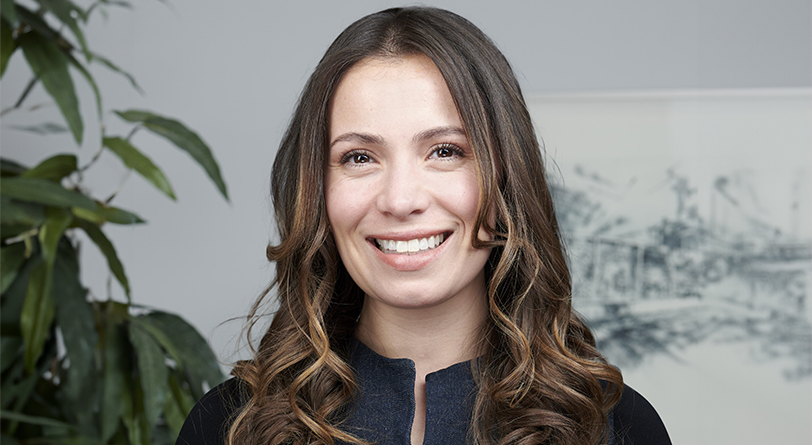Nearly 60 people signed up for the Flex Pack Crash Course at PACK EXPO International in Chicago where attendees spent the day hearing from experts along the supply chain about how the flexible packaging industry operates.
The course, which was organized by the Flexible Packaging Association’s (FPA’s) Emerging Leadership Council (ELC), ran from early morning until midafternoon on November 6, 2024, and included informational sessions on materials and substrates, converting basics and end of use, and legislative updates. The course was geared toward people who are starting out in the flexible packaging industry or who have been in it less than five years so they could get a comprehensive overview of the industry early in their careers.
“The industry is really looking for bright minds to come in and have an impact,” Weston Harcourt, an ELC member who is category manager at Sonoco Flexible Packaging, says at the start of the course. “And there are so many opportunities within this industry to do just that.”

The crash course was the second sponsored by the ELC, with the first taking place two years ago at Pack EXPO International in Chicago, as well. The ELC started five years ago to groom new leaders by having them network and focus on programs that would encourage recruitment and retention efforts at flexible packaging companies. The ELC, which has about 50 members, also focuses on political advocacy and education.
The crash course now has about 90 graduates between the two sessions, says Kasie Fairbarn, ELC co-chair and vice president of sales at Windmoeller & Hoeslscher.
“Hopefully, everyone will leave this room today and tell someone else about this industry and about FPA and what they learned and that will help us increase our relevance and expansion efforts,” she says.
Growing Markets
One of the presentations was from Apurva Shah, an ELC member and vice president of strategy and customer development at Charter Next Generation. Shah reviewed industry markets and trends.
Shah discussed how the industry has grown substantially and has great potential for future growth worldwide. In Asia, he points out, flexible packaging is everywhere, especially compared with U.S. markets where glass, metal, and other packaging types still have a significant presence on store shelves.
“If you go to Asia and you walk around the grocery store there, you see a lot more flexible packaging than we usually see here,” Shah says. However, the trends can be seen in Asian stores in the U.S., he points out.
“If you haven’t been to one, go to some of those Asian food stores here and really take a moment to appreciate how they would use flexible packaging almost throughout the store.”

His company has determined that there are several reasons why Asian and European markets have been quicker to adopt flexible packaging. But one of them is that people in other countries have smaller refrigerators, so people stock up on food in flexible packaging because of its long shelf life.
“In a resource-constrained market like in China or India, you’re going to use flexible packaging at a higher rate because everything about getting food to the consumer is more difficult,” he says.
“Generally speaking, those markets have gravitated to having more shelf-stable food and also because it’s cheaper because flexible packaging is lighter weight and it’s easier to get to the consumer, so they have adopted flexible packaging at a much higher rate than in the U.S.”
Costco in the U.S. is an example of a retailer and brand owner—with its premium Kirkland products—that is increasingly shifting toward flexible packaging, he adds. The company has determined that flexible packaging has advantages in shipping and logistics and can reduce costs while also having a lower carbon footprint than other packaging materials.
Advocacy Efforts
John Richard, FPA’s director of government relations, gave an overview on legislation, including packaging extended producer responsibility (EPR) laws that have been passed in five states so far. More states are expected to follow in 2025, he adds.
On the federal level, EPR has been discussed but is not yet a federal priority, he also says. But work continues on legislation to improve recycling nationwide, including the Recycling Infrastructure and Accessibility Act and the Recycling and Composting Accountability Act.
Richard’s presentation also included an update on advanced recycling initiatives, noting that about half the states now support advanced recycling technologies. However, some environmental groups continue to push against the technology because they have an anti-plastics agenda, he adds.
“We have a lot more work to do to create a truly circular economy for flexibles,” Richard says.
Team Effort
Shah points out that several other ELC members helped coordinate the crash course in addition to him, Fairbarn and Harcourt:
- Jaclyn Epstein, chief operating officer of Mica Corporation;
- Paul Cucco, regional sales manager, Windmoeller & Hoelscher Corporation;
- Chad Perre, vice president of technology, Pregis; and
- Kassy Oliveira, product development manager, Wikoff Color Corporation.
Editor’s note: In the image featured with this article, the Flex Pack Crash Course includes a visit to the PACK EXPO International floor in Chicago, where Erik Zellmer of Matrix Packaging demonstrates how vertical machines use flexible films to package products on November 6, 2024.
Thomas A. Barstow is senior editor of FlexPack VOICE®.
